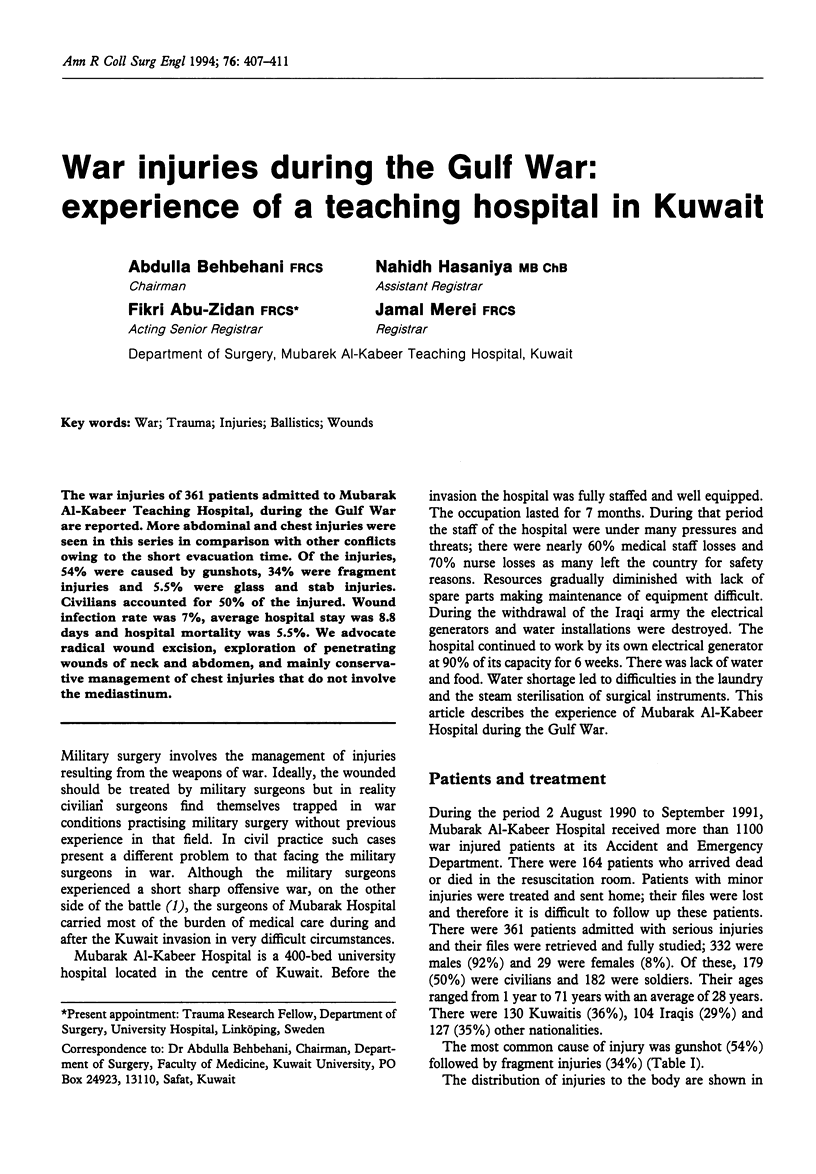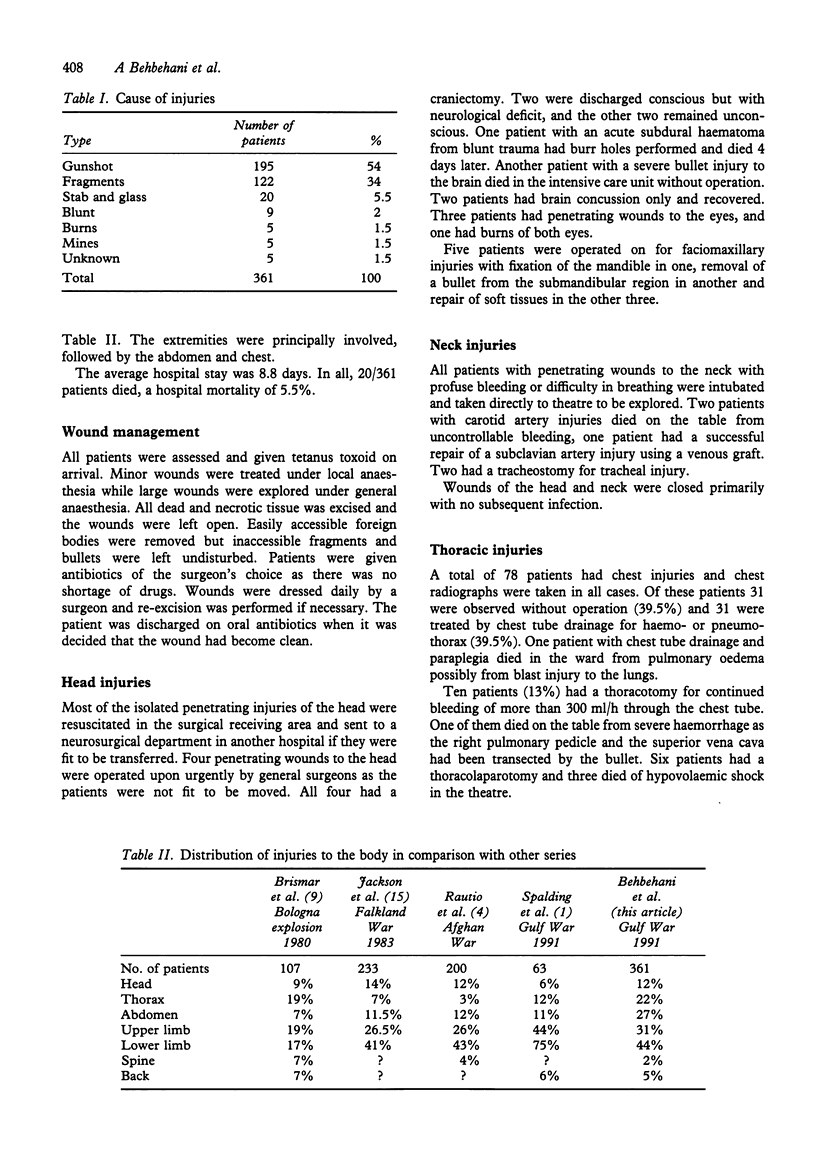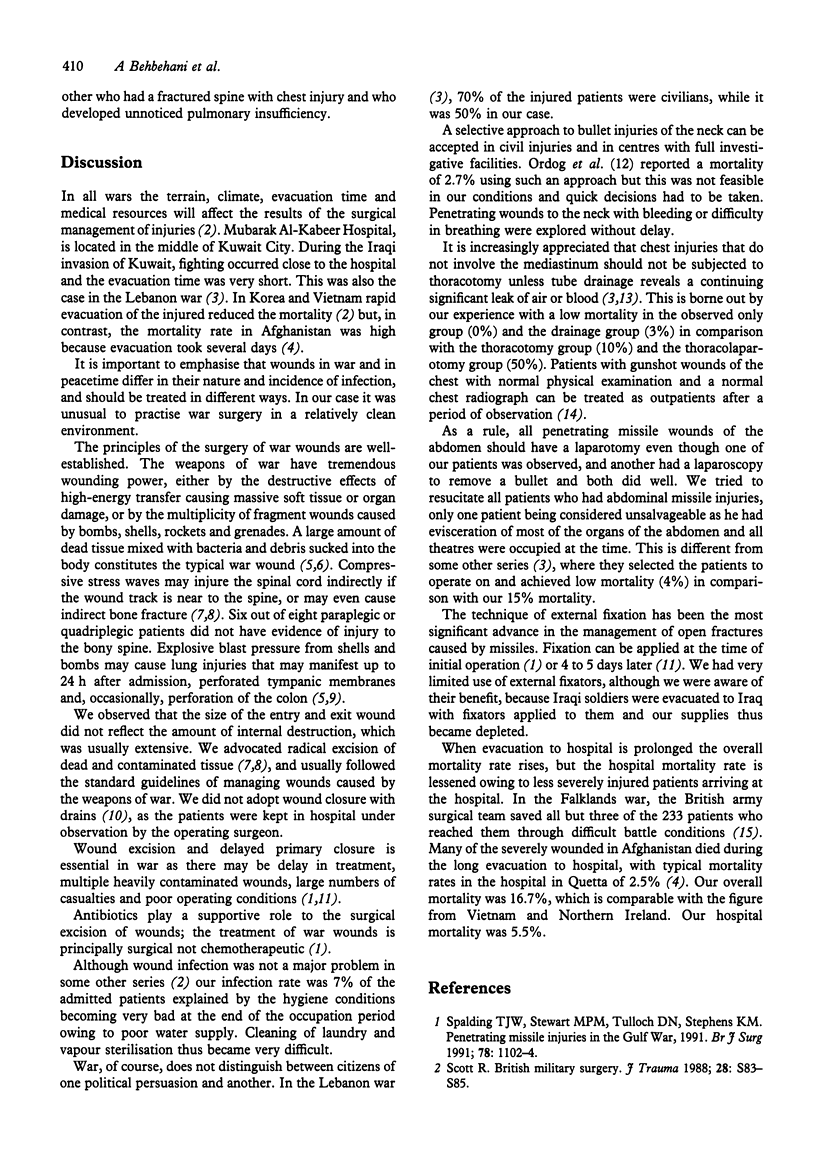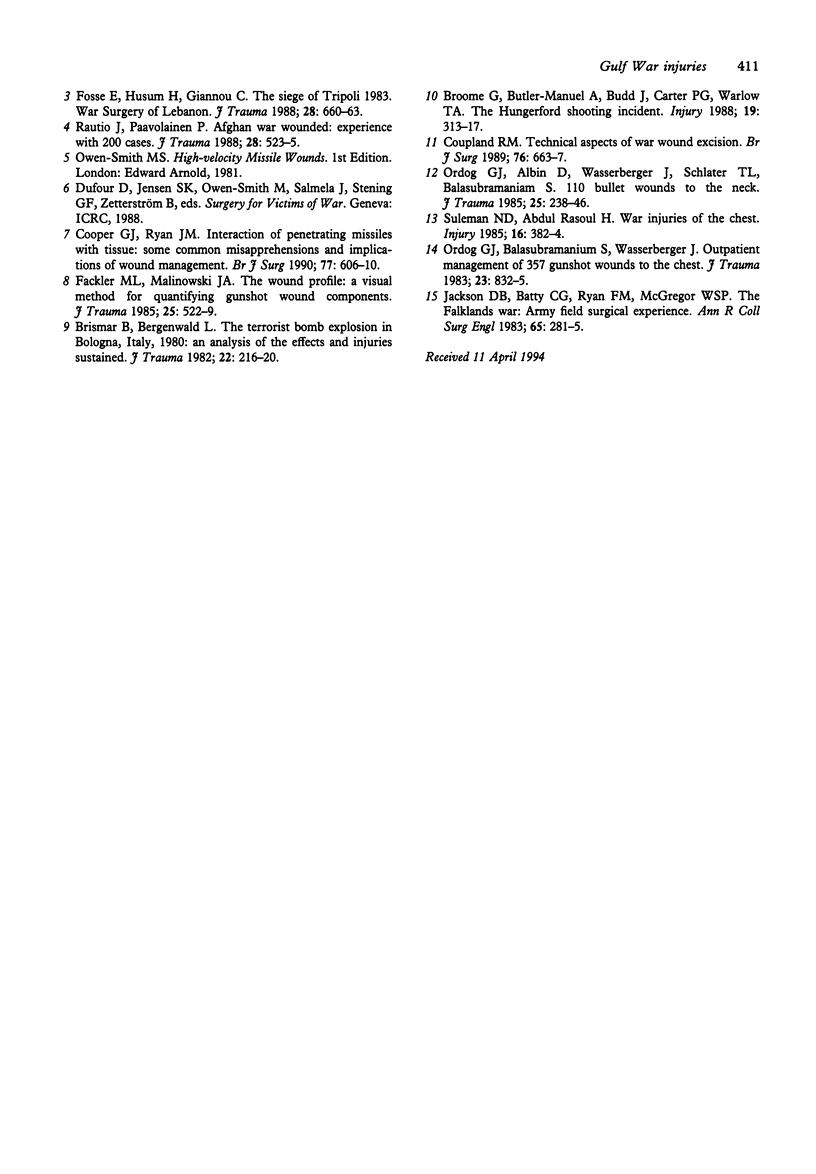Abstract
The war injuries of 361 patients admitted to Mubarak Al-Kabeer Teaching Hospital, during the Gulf War are reported. More abdominal and chest injuries were seen in this series in comparison with other conflicts owing to the short evacuation time. Of the injuries, 54% were caused by gunshots, 34% were fragment injuries and 5.5% were glass and stab injuries. Civilians accounted for 50% of the injured. Wound infection rate was 7%, average hospital stay was 8.8 days and hospital mortality was 5.5%. We advocate radical wound excision, exploration of penetrating wounds of neck and abdomen, and mainly conservative management of chest injuries that do not involve the mediastinum.
Full text
PDF




Selected References
These references are in PubMed. This may not be the complete list of references from this article.
- Brismar B., Bergenwald L. The terrorist bomb explosion in Bologna, Italy, 1980: an analysis of the effects and injuries sustained. J Trauma. 1982 Mar;22(3):216–220. doi: 10.1097/00005373-198203000-00007. [DOI] [PubMed] [Google Scholar]
- Broome G., Butler-Manuel A., Budd J., Carter P. G., Warlow T. A. The Hungerford shooting incident. Injury. 1988 Sep;19(5):313–317. doi: 10.1016/0020-1383(88)90101-5. [DOI] [PubMed] [Google Scholar]
- Cooper G. J., Ryan J. M. Interaction of penetrating missiles with tissues: some common misapprehensions and implications for wound management. Br J Surg. 1990 Jun;77(6):606–610. doi: 10.1002/bjs.1800770604. [DOI] [PubMed] [Google Scholar]
- Coupland R. M. Technical aspects of war wound excision. Br J Surg. 1989 Jul;76(7):663–667. doi: 10.1002/bjs.1800760704. [DOI] [PubMed] [Google Scholar]
- Fackler M. L., Malinowski J. A. The wound profile: a visual method for quantifying gunshot wound components. J Trauma. 1985 Jun;25(6):522–529. [PubMed] [Google Scholar]
- Fosse E., Husum H., Giannou C. The siege of Tripoli 1983: war surgery in Lebanon. J Trauma. 1988 May;28(5):660–663. doi: 10.1097/00005373-198805000-00017. [DOI] [PubMed] [Google Scholar]
- Jackson D. S., Batty C. G., Ryan J. M., McGregor W. S. The Falklands war: Army field surgical experience. Ann R Coll Surg Engl. 1983 Sep;65(5):281–285. [PMC free article] [PubMed] [Google Scholar]
- Ordog G. J., Albin D., Wasserberger J., Schlater T. L., Balasubramaniam S. 110 bullet wounds to the neck. J Trauma. 1985 Mar;25(3):238–246. doi: 10.1097/00005373-198503000-00014. [DOI] [PubMed] [Google Scholar]
- Ordog G. J., Balasubramanium S., Wasserberger J. Outpatient management of 357 gunshot wounds to the chest. J Trauma. 1983 Sep;23(9):832–835. doi: 10.1097/00005373-198309000-00008. [DOI] [PubMed] [Google Scholar]
- Rautio J., Paavolainen P. Afghan war wounded: experience with 200 cases. J Trauma. 1988 Apr;28(4):523–525. doi: 10.1097/00005373-198804000-00019. [DOI] [PubMed] [Google Scholar]
- Scott R. British military surgery, 1945-1985. J Trauma. 1988 Jan;28(1 Suppl):S83–S85. doi: 10.1097/00005373-198801001-00018. [DOI] [PubMed] [Google Scholar]
- Spalding T. J., Stewart M. P., Tulloch D. N., Stephens K. M. Penetrating missile injuries in the Gulf war 1991. Br J Surg. 1991 Sep;78(9):1102–1104. doi: 10.1002/bjs.1800780921. [DOI] [PubMed] [Google Scholar]
- Suleman N. D., Rasoul H. A. War injuries of the chest. Injury. 1985 May;16(6):382–384. doi: 10.1016/0020-1383(85)90049-x. [DOI] [PubMed] [Google Scholar]


